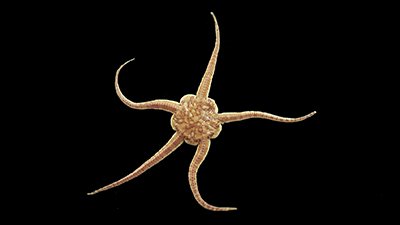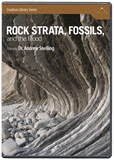
Which Version of History Do Fossils Reflect?
Fossil diversity “accurately reflects history”—but which version of history?
News Source
Paleontologists have long wondered whether the variety in the fossil record provides a true history of earth’s biodiversity. Could the way sediment is laid down have caused some living things to be over- or underrepresented? In 1972 David Raup published a paper raising this question. “Raup showed that it was important to look carefully for preservation biases. If the formation of sedimentary rocks decreases for a time, perhaps the fossil diversity would also decrease even if there was no change in the actual ecosystems.”
A statistical analysis just published in Science suggests the fossil record is a realistic sampling reflecting the history of life on earth. “This goes right back to Darwin,” says coauthor Shanan Peters. “The Origin of Species even has a chapter titled 'On the imperfection of the geological record,' with a subheading titled 'On the poorness of our paleontological collections.' Darwin noted the absence of transitional forms in the fossil record but hoped the deficit would be rectified in time. “After all,” comments the arstechnica journalist, “less than one percent of extinct species are represented in the fossil record.” (Though to those of us who don’t view the invisible through a lens of deep time, such a statement seems ludicrous; the journalist is probably commenting—like Darwin—on the conspicuous absence of countless transitional forms evolutionists assume must have lived for their presumptions to be true.) “The great irony,” adds Peters, “may end up being that the face-value fossil record is our best estimate of the true history of life.”
This analysis compared various parameters such as “marine diversity, marine sedimentary rock formation, sea level, and isotopes of carbon, oxygen, sulfur, and strontium” statistically to see how they are related. Volcanic emissions, the location of water in the environment, temperature, the amount of oxygen in the environment, and erosion all affect these parameters.
The researchers found the way sedimentary rock is laid down does correlate with species diversity because both are related to “other geological forces.”
The researchers found the way sedimentary rock is laid down does correlate with species diversity because both are related to “other geological forces.” Peters writes, “Raup was right, in that there is a strong correlation between the variable rock record and fossil diversity, but he was wrong about the meaning of that correlation. It exists because the biosphere actually responds to the environmental changes that are responsible for producing variability in the marine sedimentary rock record.”
Both the researchers and the media believe viewing the fossil record is tantamount to watching “evolution play out” and “literally reading the history of life on Earth.” These researchers are now confident the same factors that influenced the deposition of fossils in the rocks also influenced the “macroevolution”1 of species reflected in the fossils themselves.
The fossil record does not, however, demonstrate transitional species with evolution of various kinds of living things from common ancestral predecessors. The researchers simply assume the fossils demonstrate such “macroevolution.”2 Darwin’s missing transitional forms are still missing.
Furthermore, it is not surprising to see correlation between the variety in the fossil record with parameters related to rock formation and climate disturbance. The interpretations in this study are wholly dependent on the uniformitarian presuppositions that ignore the global Flood and subsequent Ice Age. Yet these events would have affected all of the geologic and climactic factors the researchers analyzed as well as—obviously—the creatures rapidly buried by the Flood. Thus, catastrophic changes in the environment did affect the biodiversity of creatures found in the fossil record but not the evolution of those life-forms, only the order in which they were buried.
Indeed, the fossil record is a “pretty faithful telling”—but it faithfully tells of a catastrophic year in the history of earth as recorded in Genesis. Peters says, “The biosphere actually responds to the environmental changes that are responsible for producing variability in the marine sedimentary rock record.” She’s right; it did—about 4,300 years ago. The biosphere responded to the sudden environmental changes of the global Flood and subsequent events such as the Ice Age. It responded by mostly getting buried in marine sediment. Creation scientists and evolutionary scientists look at the same evidence, but differing presuppositions determine the interpretation.
Further Reading
For More Information: Get Answers
Remember, if you see a news story that might merit some attention, let us know about it! (Note: if the story originates from the Associated Press, FOX News, MSNBC, the New York Times, or another major national media outlet, we will most likely have already heard about it.) And thanks to all of our readers who have submitted great news tips to us. If you didn’t catch all the latest News to Know, why not take a look to see what you’ve missed?
(Please note that links will take you directly to the source. Answers in Genesis is not responsible for content on the websites to which we refer. For more information, please see our Privacy Policy.)
Footnotes
- Bjarte Hannisdal and Shanan E. Peters, “Phanerozoic Earth System Evolution and Marine Biodiversity,” Science 334, no. 6059 (November 25, 2011): 1121–1124, doi: 10.1126/science.1210695
- Ibid.
Recommended Resources

Answers in Genesis is an apologetics ministry, dedicated to helping Christians defend their faith and proclaim the good news of Jesus Christ.
- Customer Service 800.778.3390
- © 2024 Answers in Genesis






